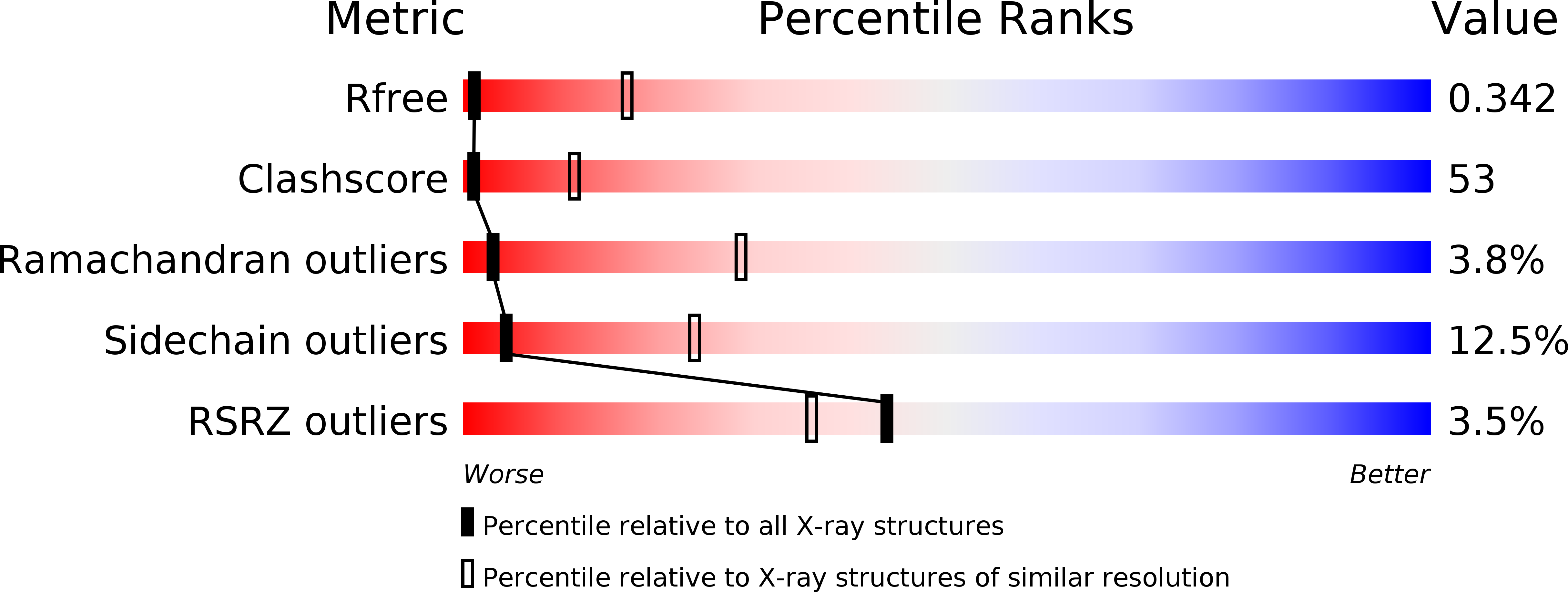
Deposition Date
2010-10-17
Release Date
2014-07-09
Last Version Date
2023-09-20
Entry Detail
PDB ID:
4V81
Keywords:
Title:
The crystal structure of yeast CCT reveals intrinsic asymmetry of eukaryotic cytosolic chaperonins
Biological Source:
Source Organism:
Saccharomyces cerevisiae (Taxon ID: 4932)
Host Organism:
Method Details:
Experimental Method:
Resolution:
3.80 Å
R-Value Free:
0.34
R-Value Work:
0.30
R-Value Observed:
0.30
Space Group:
P 1


